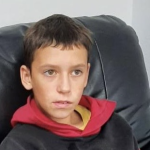Learning behavioural management
Many autism training programs focus on teaching the autistic person all the behaviours and skills needed in all situations. This is due to the fact that autism spectrum disorder creates difficulties in synchronizing different skills and with the ability to transfer specific behaviours to different life situations.
Behavioural correction for autism requires total, comprehensive training, which is not always necessary for a child who may become burdened by the need to make significant efforts. It is much more useful to determine the forms of behaviour that are acceptable for a particular child and teach which ones to use in various situations.
What is behaviour management for autism?
This is a procedure or program in which the main focus is to ensure that the child can independently determine their own behaviour and how acceptable and socially adequate it is in a particular situation. Also, the child must be able to operate independently. The child should be able to understand the technique, use it easily, and apply several forms of acceptable behaviour to many life situations.
5 stages of teaching children with autism spectrum disorder:
- Determining the existing behaviour of an autistic child and the reasons for its occurrence
- Identifying appropriate types of reinforcement that can motivate a child to correct the unwanted behaviour
- Selecting a suitable method or its individual development to correct behavioural factors
- Training in the independent application of the chosen method
- Teaching a child how to independently correct their behaviour using this method
This type of training for children with ASD is suitable for children of all ages and can also be applied to adult autistic patients. This program is difficult to use in group classes; it is individually oriented. According to recent studies, scientists evaluate this method as quite effective.
How effective is behaviour management training for autistic people?
Therapeutic results depend on the age at which therapy is started. Starting sooner will have more lasting and noticeable results. Pathogenesis, the symptomatic picture, and the degree of brain damage also have a large influence. In general, regular and comprehensive use of the technique at home and in a preschool or educational institution has good results. But, like many other methods, this method does not eliminate the cause of the disease the way that cell therapy does.
You just need to fill out the feedback form to register at the Mardaleishvili Medical Centre online and get advice regarding the stem cell transplantation procedure.
Correcting childhood autism with stem cells means activating the body’s own recreational capabilities. To do this, basic stem cells are collected, multiplied, and injected into the spinal canal to improve the cellular composition of the brain. Such treatment of autism spectrum disorder is absolutely safe for a child; there is no immune rejection of the injected cells and no side effects.
Choose reliable stem cell treatment for childhood autism; this method will help you overcome the disease and become healthy!
Autism Treatment Center Videos
Autism treatment with own stem cells
Cord blood association congress
International Quality Crown
Autism Treatment Reviews
Autism treatment with own stem cells
The story of Alessandro (6 years old)
Autism Patient Testimonial - Stem Cell Treatment
Clients Testimonials

Feedback from Igor, David’s father (12 years old) Read More

Feedback from Olga, Fedya’s mother Read More

Feedback from Natalia, Radomir’s mother (15 years old) Read More

Feedback from Esther, Samuel’s mother (8 years old) Read More

Feedback from Abibe, Selim’s mother (7 years old) Read More












